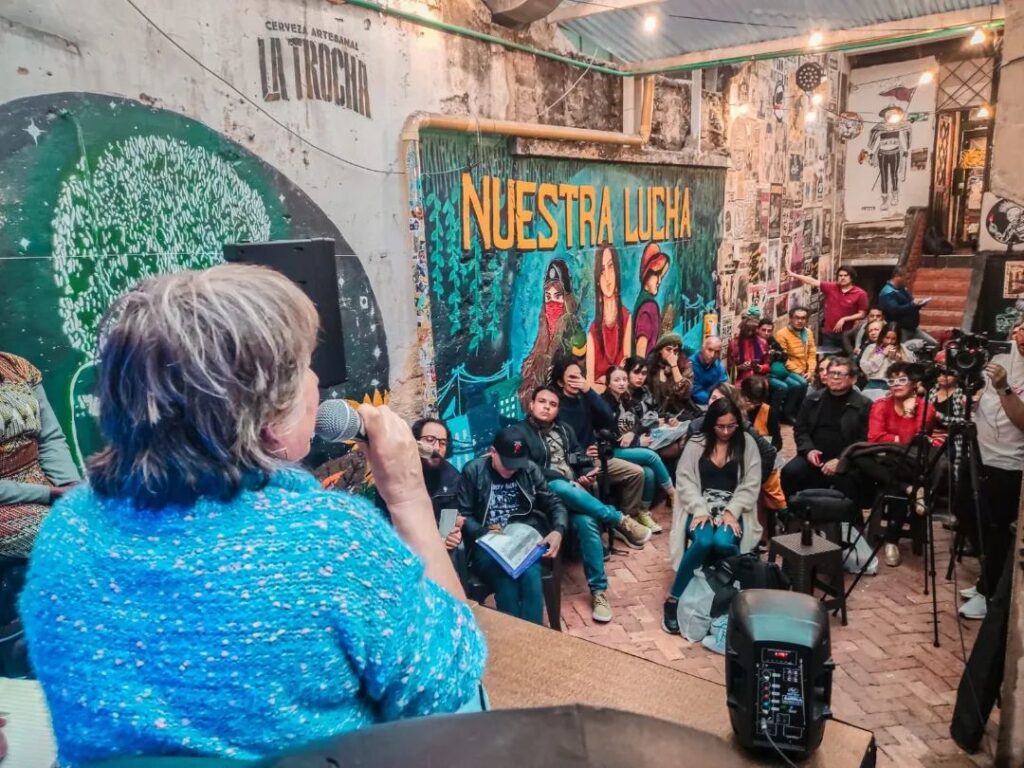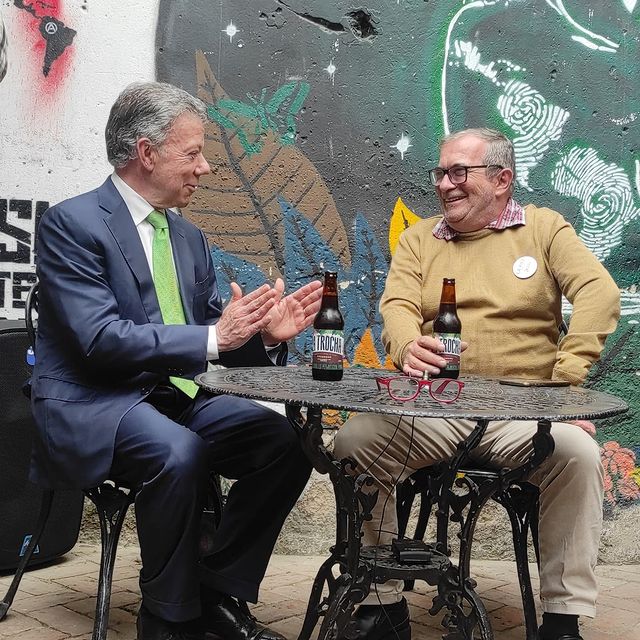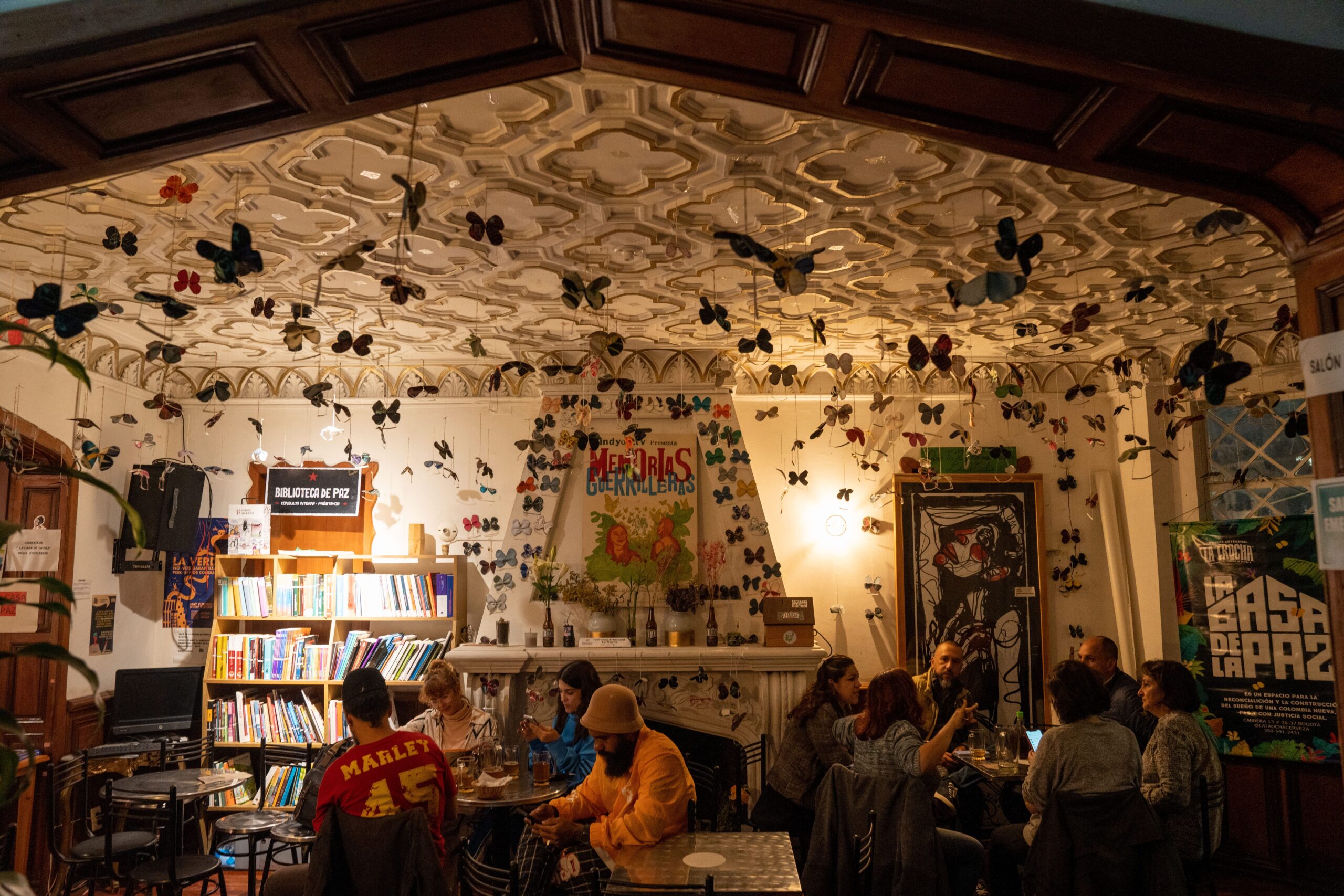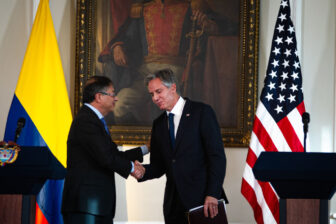BOGOTÁ—On a recent Saturday night in Bogotá, La Casa de la Paz, a red-brick, three-story Victorian house, was packed with people sipping glasses of craft beer suffused with notes of passionfruit, açaí and coffee. But amid the lively chatter, serious issues were on the minds of the customers—from the critical state of peace negotiations with the ELN, Colombia’s largest rebel group, to a recent truck driver strike in reaction to the government’s decision to hike diesel prices.
That’s because La Casa de La Paz is both the house of La Trocha (Spanish for ‘trail’), an artisanal beer company, and a political hub of sorts—a space for meetings and events and a social project to advance the reincorporation into civilian life of former Revolutionary Armed Forces of Colombia (FARC) members who signed the 2016 Peace Accords, a watershed moment in the nation’s history that ended five decades of internal conflict.
La Trocha was born from funds pooled together by its ten founders, former FARC members. As part of the accord, after demobilization, the government gave former FARC members $2,000 each to start a business.
The La Trocha founders’ initial idea was to make cleaning supplies such as soaps and brooms to sell door to door. They shelved it when, as founder Alexander Monroy told AQ, a brewery offered to teach them how to make beer instead. Doing back-of-the-envelope math, Monroy realized that people buy soap maybe once every two weeks, but they might have several beers in a single night.
Beyond selling beer, La Casa helps other former combatants rejoin the legal economy. The first thing visitors see when entering is a small shop with ceramics, artisanal spirits, turmeric and coffee made by former FARC members who stayed in rural areas and need a space in the big city to display their goods. A large room on the second floor houses a fashion design store, Manifiesta. Garments are tailored by peace signatories and war survivors—a piece was once worn by former president Juan Manuel Santos.

Monroy and Doris Suárez are the leaders of La Casa. Monroy is from the outskirts of Bogotá and, when active as a guerrilla combatant, operated within the city. She was a member of FARC for 15 years, and in prison for another 14. She was also part of the Unión Patriótica, a political party active in the 1980s and 1990s of which, according to the Inter-American Court of Human Rights, thousands of members were killed in confrontations with the Colombian armed forces.
What started as a project to provide ex-guerrillas with an economic lifeline has morphed into a house with an open door to civil society. “La Casa has become a space of memory, peace and reconciliation, especially through culture and art,” Monroy told AQ. Events range from panels with the mothers of those killed during the conflict to fashion shows displaying the clothes made by ex-combatants.
The place is rich in political symbolism. In 2021, former president Santos and FARC’s last commander-in-chief Rodrigo Londoño, the chief signatories of the Peace Accords, shared a beer in the courtyard to commemorate the fifth anniversary of the agreement.
Implementation of the accords is lagging under Petro
But all is not well with the implementation of the Peace Accords. President Gustavo Petro recently announced that he would denounce the Colombian state before the UN Security Council for refusing to hold up its end of the bargain—a confusing gesture, given that Petro is himself the head of government. It’s striking that the implementation of the accords has taken a back seat under Petro, a former member of the Marxist guerilla group 19th of April Movement, M-19, who was once an important voice in favor of the agreements.
The Kroc Institute at Notre Dame University, tasked with monitoring the implementation of the peace accords, came out with a report in May that backs the president’s diagnosis that implementation is lagging. According to the study, 49% of the commitments are at a minimum level or have not been initiated at the seven-year mark of the signing of the Peace Agreements (the parties agreed upon a 15-year implementation period). The slowest progress has been over the last two years, which overlap with the first half of Petro’s presidency.
The United Nations Verification Mission in Colombia, established in 2017, recently published their quarterly report, acknowledging there are still many challenges ahead.

Professor Angelika Rettberg at Universidad de los Andes told AQ that while Petro’s tenure has seen the budget for peace progressively increase, implementation has still failed to meet expectations. The president has chosen to focus efforts on his own gargantuan project of Total Peace, a policy of setting up negotiations with all armed groups to end the country’s civil conflict and diminish violence without a clear strategy.
Recent poll shows that public security resurfaced last year as the most important issue for Colombians, the first time since 2016, the year FARC ceased to exist. On top of the slow implementation of the agreements, coca cultivation is at historically high levels and Petro’s ambitious bid for Total Peace has not yet borne fruit. Nonetheless, at a moment when safety is again top of the mind for Colombians, La Casa is a powerful reminder that the country has not gone back to the 2000s. As Rettberg told AQ: “most FARC members did abide by the rules, they did go through a reincorporation process, and many are succeeding.” In fact, Rettberg remarked that the rate of former FARC combatants who have remained demobilized is higher than for other demobilization processes elsewhere.
After a 50-year insurgency, peace is now primordial for most former FARC members, the state, and Colombians. Despite a slower-than-expected implementation of the accords, an even bolder peace project, difficulties notwithstanding. Meanwhile, an enjoyable Saturday evening is not just that at La Casa, as conflict-scarred women sell their hand-made clothes, and Bogotanos wonder aloud about the prospects for peace.








